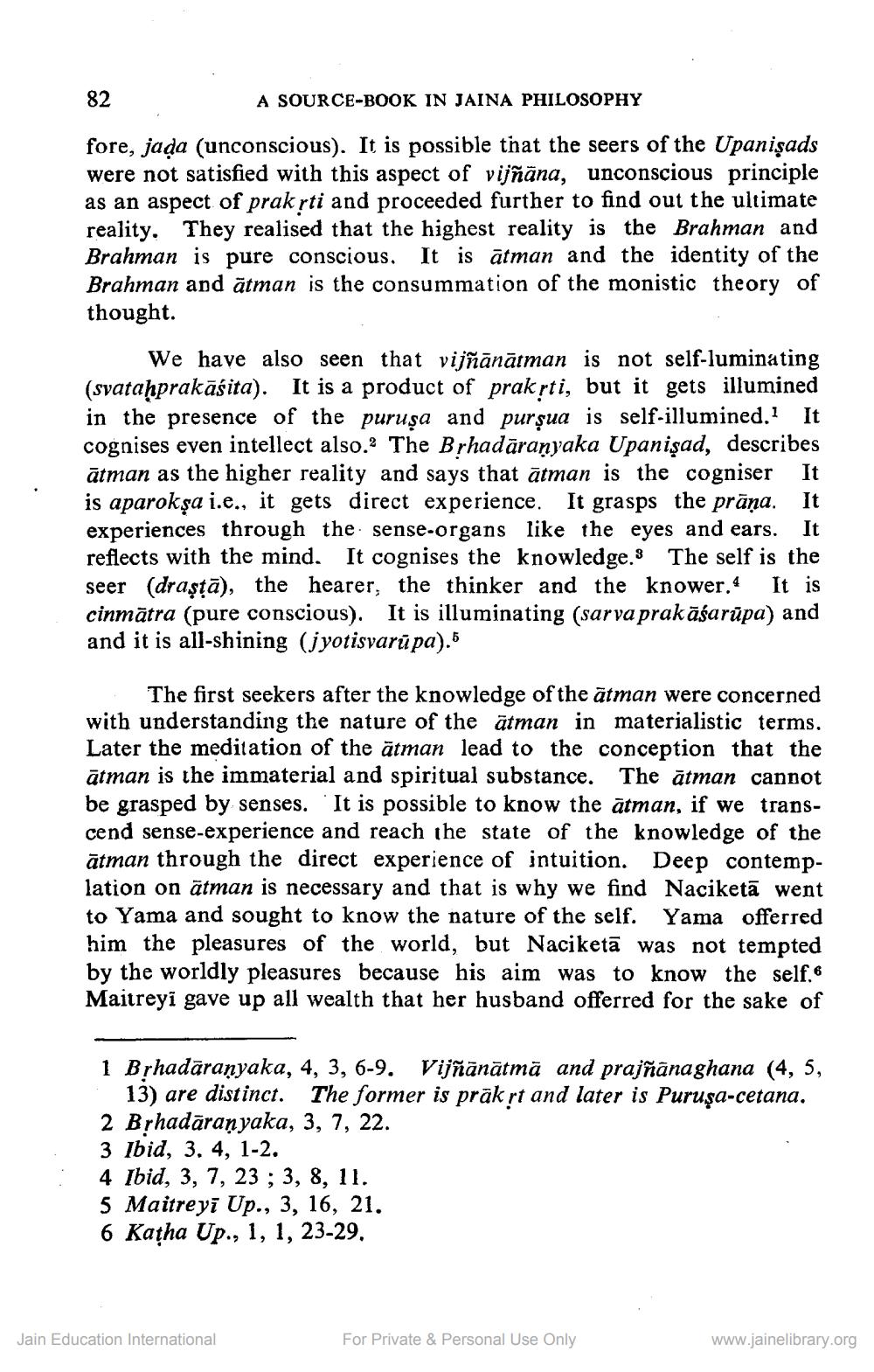________________
82
A SOURCE-BOOK IN JAINA PHILOSOPHY
fore, jada (unconscious). It is possible that the seers of the Upanişads were not satisfied with this aspect of vijñāna, unconscious principle as an aspect of prakrti and proceeded further to find out the ultimate reality. They realised that the highest reality is the Brahman and Brahman is pure conscious. It is ātman and the identity of the Brahman and ātman is the consummation of the monistic theory of thought.
We have also seen that vijñānātman is not self-luminating (svataḥprakāśita). It is a product of prakrti, but it gets illumined in the presence of the puruşa and purşua is self-illumined. It cognises even intellect also. The Brhadāranyaka Upanişad, describes ātman as the higher reality and says that ātman is the cogniser It is aparokşa i.e., it gets direct experience. It grasps the prāna. It experiences through the sense-organs like the eyes and ears. It reflects with the mind. It cognises the knowledge. The self is the seer (draştā), the hearer, the thinker and the knower. It is cinmātra (pure conscious). It is illuminating (sarva prakāśarūpa) and and it is all-shining (jyotisvarüpa).5
The first seekers after the knowledge of the ātman were concerned with understanding the nature of the ātman in materialistic terms. Later the meditation of the ātman lead to the conception that the ātman is the immaterial and spiritual substance. The ātman cannot be grasped by senses. It is possible to know the ātman, if we transcend sense-experience and reach the state of the knowledge of the ātman through the direct experience of intuition. Deep contemplation on ātman is necessary and that is why we find Naciketā went to Yama and sought to know the nature of the self. Yama offerred him the pleasures of the world, but Naciketā was not tempted by the worldly pleasures because his aim was to know the self.6 Maitreyi gave up all wealth that her husband offerred for the sake of
1 Brhadaranyaka, 4, 3, 6-9. Vijñānātmã and prajñānaghana (4, 5,
13) are distinct. The former is prāk rt and later is Puruşa-cetana. 2 Brhadāraṇyaka, 3, 7, 22. 3 Ibid, 3, 4, 1-2. 4 Ibid, 3, 7, 23; 3, 8, 11. 5 Maitreyi Up., 3, 16, 21. 6 Katha Up., 1, 1, 23-29,
Jain Education International
For Private & Personal Use Only
www.jainelibrary.org




